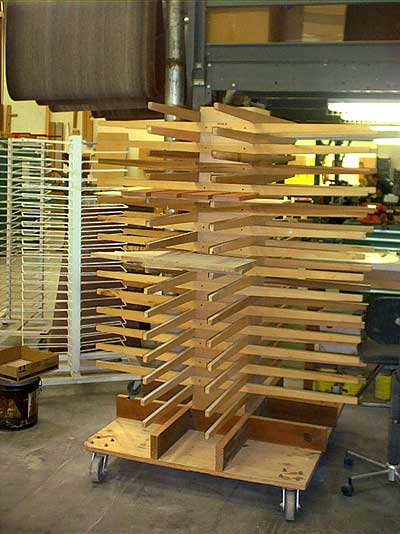Question
I have a client who insists on a hand rubbed finish for a kitchen table. I hate finishing and usually send it out. What's the best wipe-on protection I can give her? Not the best brand necessarily, but the best protection from water/spills/kids/etc. It's an arts and crafts style - I think that's why she wants hand rubbed.
Forum Responses
(Finishing Forum)
From contributor K:
"Hand-rubbed finish" has different meanings, so it would be wise to find out precisely what your customer expects. To some, hand-rubbed merely means a satiny sheen. To others, it may mean the same satiny sheen, but more like the results you get by rubbing out with #0000 steel wool. Rubbing out is also a method to smooth and level the finish after spraying, possibly filling the pores (of some woods) along the way. For your customer, it may mean not having too thick of a finish on the table. I've heard the term "close to the wood" often used.
For wipe-on finishes, probably the best approach would be a 50/50 mixture of varnish or polyurethane and mineral spirits. It's slow but doesn't require a lot of expertise - just rag it on heavily, let it sit for 10-15 minutes, wipe it all off, and let it cure. Then do it all again. Repeat until you get the desired buildup. Between coats, you will have to do varying degrees of scuff sanding to smooth it all out.
Don't hate finishing, embrace it - it's over 50% of the reason your product sells. For me, it's closer to 100% of the reason.
Some of these coatings are marketed as "hand rubbed" since their look simulates the appearance of being hand rubbed, but without all the labor and elbow grease that's involved.
A kitchen table needs a coating that will withstand water and food spills and still be able to hold up to constant cleaning. My suggestion would be to apply a conversion varnish in a satin or flat sheen. Once the coating has cured, hand rub a coat of wax on it. An oil based varnish or a tung oil can be applied entirely by hand, but keep in mind that they require long dry times in between each coat and extra long dry times before you can sand and apply successive coats.
Contributor K, that 50/50 mixture you're talking about - are there any premixed you'd recommend ?
How the finish is applied has nothing to do with this phrase. How the applied finish is burnished to create your desired sheen is what a "hand rubbed finish" refers to in the furniture industry.
And if I use a dual pad rubbing machine on my table top topcoats, I now have a hand rubbed finish. If I use a Makita sander/polisher with a wool bonnet and a series of Meguires rubbing compounds on my topcoats, I still have a hand rubbed finish. Often, the term "hand rubbed" is used as a selling point for a low-sheen steel wool look, whether you steel wool by hand or with a rubbing machine.
